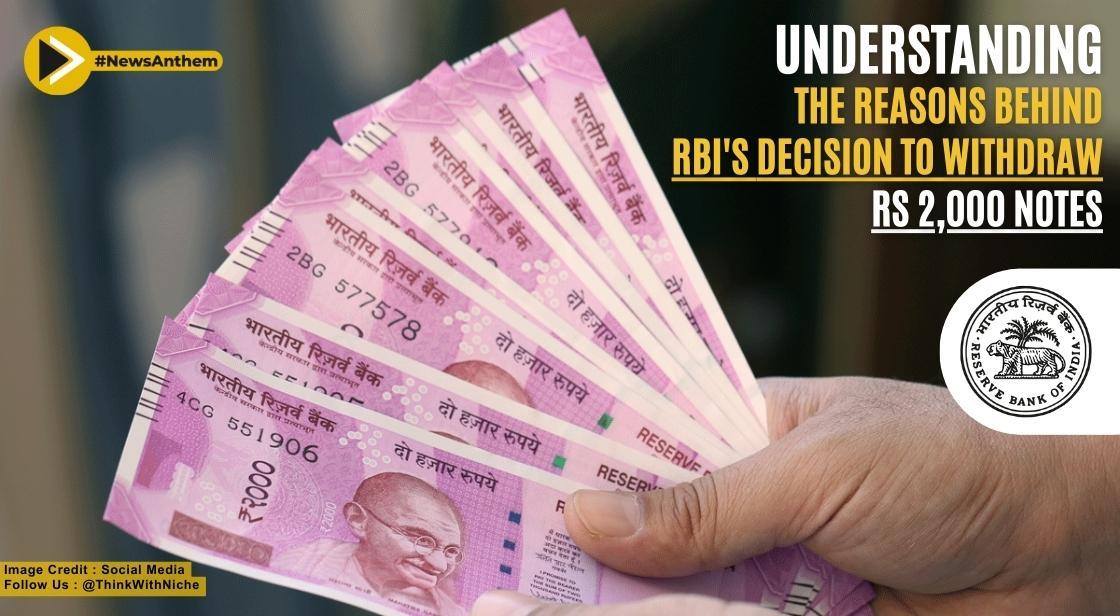Understanding the Reasons Behind RBI's Decision to Withdraw Rs 2,000 Notes

News Synopsis
RBI Withdraws Rs 2,000 Notes as Part of Clean Note Policy
The Reserve Bank of India (RBI) has announced the withdrawal of the Rs 2,000 currency note as part of its Clean Note Policy. While the note will continue to be legal tender, citizens are advised to deposit or exchange their Rs 2,000 notes at banks starting from May 23 until September 30. This move is aimed at removing damaged, counterfeit, and underutilized notes from circulation, as well as ensuring that an adequate supply of other denominations is available to meet the public's currency requirements.
Reasons Behind the Withdrawal and Impact on Currency Circulation
The decision to withdraw the Rs 2,000 note is based on observations that this denomination is not commonly used for transactions. The RBI stated that the stock of banknotes in other denominations remains sufficient to meet the currency demands of the public. Additionally, the withdrawal of the Rs 2,000 note is expected to support banks' deposit mobilization efforts, similar to the outcome observed during the demonetization exercise in 2016.
When was the Rs 2,000 note introduced?
Rs 2,000 notes were introduced during the government's demonetisation exercise in November 2016, wherein the then notes of Rs 500 and Rs 1,000 lost legal tender status. This new denomination note was introduced due to the currency requirement of the economy, under the RBI Act.
Introduced during the demonetization exercise in November 2016, the Rs 2,000 note was initially meant to fulfill the economy's currency requirements. However, the printing of these notes ceased in 2018-19 due to a continuous decline in their circulation. As of March 31, 2023, the total value of Rs 2,000 notes in circulation accounted for only 10.8% of the overall notes in circulation, compared to its peak of 37.3% on March 31, 2018. Most of the Rs 2,000 banknotes in circulation were issued before March 2017 and have now reached their estimated life span of 4-5 years.
For individuals holding Rs 2,000 notes, there is no need to panic. The RBI considers this withdrawal a routine exercise. Starting from May 23, these notes can be deposited in bank accounts or exchanged at banks and regional offices of the RBI. The RBI has set a limit of Rs 20,000 for exchanging Rs 2,000 notes at a time, but there are no restrictions on deposits. Even non-account holders can exchange their notes at any bank branch.
Conclusion:
The withdrawal of the Rs 2,000 note is a routine exercise of the RBI and people need not panic. The notes will continue to be legal tender and can be deposited or exchanged at banks until September 30.
The withdrawal of Rs 2,000 notes by the RBI is part of its Clean Note Policy to remove damaged, counterfeit, and underutilized notes from circulation. Individuals are encouraged to deposit or exchange their Rs 2,000 notes at banks within the specified timeframe. This routine exercise is expected to have a positive impact on currency circulation and support banks' deposit mobilization efforts.
You May Like









